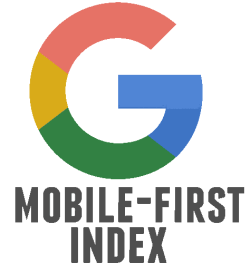 SEO Myths for 2018
SEO Myths for 2018
1. I must submit my site to Google. – The idea that you need to submit your website to Google in order to appear in search results (or rank) is nonsense. A search engine like Google can still find your site without you submitting it.
2. More links are better than more content – In the past, building as many links as possible without analyzing the linking domain was how SEO typically worked. By doing this, your website was sure to rank higher. Building links is still a very important part of ranking factors. It is among the top five most important ranking factors. When you invest in content, that content can be used for webpages, blog posts, lead generation offers, and guest posts on other sites – all content types that will bring more links with them over time.
3. Having a secure (HTTPS encrypted) site isn’t important for SEO – To put it simply, the extra “s” means your connection to that website is encrypted so hackers can’t intercept any of your data. The technology that powers that little “s” is called SSL, which stands for Secure Sockets Layer.
4. SEO is all about ranking – While there’s a strong correlation between search results placement and clickthrough rates, ranking is not the supreme end goal that it used to be. Online sales, leads via a Contact Us form are two examples of goals, not just many visitors.
5. Meta descriptions have a huge impact on search rankings – Meta descriptions are HTML attributes that concisely explain the contents of webpages. You’ve seen them before on Google’s search engine results pages (SERPs), where they’re commonly used as preview snippets. They have no bearing on search rankings, but are still valuable for clickthrough rates.
6. Pop-ups will always hurt my ranking in search – Pop-ups ARE penalized by Google if they are ‘Intrusive’ and impact the user experience. When they’re used in a way that’s helpful instead of disruptive, popups can be a healthy part of your inbound strategy.
7. Keyword optimization is THE key to SEO – It used to be important that you write your content with exact matches of your keyword. But now, Google uses RankBrain, which is its machine-learning algorithm. Until search engines are able to enter our brains and read our thoughts, we’ll always need to use written language in order to
make search queries.
8. The more pages I have, the better – Some people have the notion that if you have more pages, you will get more traffic to your website. Just like link-building, creating content just to have more pages isn’t enough. Make sure you are focusing not just on quantity, but on quality, too. If you don’t have good content, you will not rank well and all those pages you created won’t help your cause.
9. Good user experience is an added bonus, not a requirement – A good user experience is more important than ever. It makes sense. If Google sends you to a webpage, they want to make sure you have a good experience on that page. They are after all a business too, and thus they want to delight their users. Think about it from the search engine’s point of view: they didn’t create the webpage themselves, but they are endorsing it.
10. Local SEO doesn’t matter anymore – This myth couldn’t be further from the truth. If you’re a local business, optimizing for local search won’t only help you get found, but it will help you get found by people who are nearby and more likely to buy from you. And if you’re a national or global business trying to rank for a local term, you might as well give up. Local SEO is that important now!
11. Images don’t require any optimization – For a long time, it was okay to neglect the images on your site and still rank without using alt text and image file names to boost your page relevance. On-page SEO is more important than ever, so excluding images will prevent your website’s SEO from being the best it can be.
12. I don’t need a mobile optimization strategy – The optimal experience for your visitors and your own performance is to implement responsive design. Responsive design makes your page adapt to the visitor and will display information that is sized and zoomed appropriately so it’s easy to read on whatever device he or she is using.
|
|
|
 Google Tips On Mobile-First Index
Google Tips On Mobile-First Index
After months and months of promises, Google has finally published on the Google webmaster blog their tips to getting ready for the mobile-first index. Here are the official tips from Google on this:
1. Make sure the mobile version of the site also has the important, high-quality content. This includes text, images (with alt-attributes), and videos – in the usual crawlable and indexable formats.
2. Structured data is important for indexing and search features that users love: it should be both on the mobile and desktop version of the site. Ensure URLs within the structured data are updated to the mobile version on the mobile pages.
3. Metadata should be present on both versions of the site. It provides hints about the content on a page for indexing and serving. For example, make sure that titles and meta descriptions are equivalent across both versions of all pages on the site.
4. No changes are necessary for interlinking with separate mobile URLs (m.-dot sites).
5. Check hreflang links on separate mobile URLs. When using link rel=hreflang elements for internationalization, link between mobile and desktop URLs separately. Your mobile URLs’ hreflang should point to the other language/region versions on other mobile URLs, and similarly link desktop with other desktop URLs using hreflang link elements there.
6. Ensure the servers hosting the site have enough capacity to handle potentially increased crawl rate. This doesn’t affect sites that use responsive web design and dynamic serving, only sites where the mobile version is on a separate host, such as m.example.com.
7. Make sure that Googlebot can crawl your JavaScript, CSS and image files by using the “Fetch as Google” feature in Google Search Console. It will allow you to see exactly how Googlebot sees and renders your content, and it will help you identify and fix a number of indexing issues on your site.
8. Check and test your robots.txt in Google Search Console.
9. Test your mobile pages with the Mobile-Friendly Test to see if our systems detect your website as compatible for mobile users.
10. If you use separate URLs for your mobile pages, make sure to test both the mobile and the desktop URLs, so you can confirm that the redirect is recognized and crawlable.
11. Some types of videos or content are not playable on mobile devices, such as license-constrained media or experiences that require Flash or other players that are not broadly supported on mobile devices. Unplayable content, when featured on a page of any website can be very frustrating for users.
12. Use Google Search Console. If you’re a verified user, we’ll send you a message if we detect that any of your site’s pages are redirecting smartphone users to the homepage. We’ll also show you any faulty redirects we detect in the Smartphone Crawl Errors section of Search Console.
13. Avoid interstitials (Pop-Ups) – Many websites show interstitials or overlays that partially or completely cover the contents of the page the user is visiting. These interstitials, commonly seen on mobile devices promoting a website’s native app, mailing list sign-up forms, or advertisements, can make for a bad user experience. In extreme cases, the interstitial is designed to make it very difficult for the user to dismiss it and view the real content of the page. Since screen real-estate on mobile devices is limited, any interstitial negatively impacts the user’s experience.
14. Slow Mobile Pages – It is very important to make sure your mobile site loads quickly. Users can become very frustrated if they have to wait a long time to see your content.
15. Small font size – Avoid setting the font size too small to be legible on a mobile device, forcing those visitors to “pinch to zoom” in order to read.
16. Touch elements too close – Avoid setting touch elements such as buttons and links so close to each other that a mobile user cannot easily tap a desired element with their finger without also tapping a neighboring element.
|
|
|

